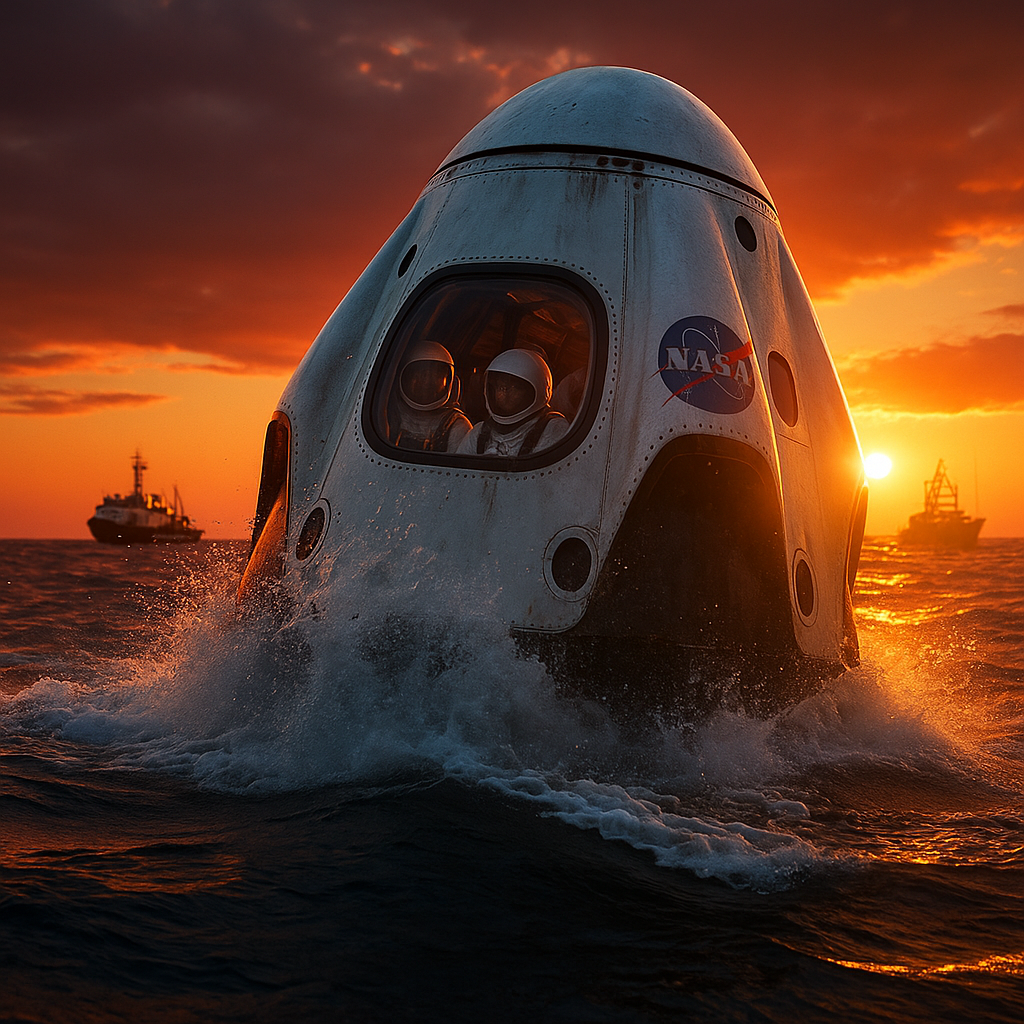Imagine boarding a spacecraft to the International Space Station (ISS) as casually as you would board a flight to another city. What was once a far-off dream is fast becoming reality thanks to NASA’s pioneering Commercial Crew Program (CCP). But how is NASA making space travel more affordable, safe, and sustainable for everyone? The answer lies in private partnerships and a new era of commercial spaceflight that’s reshaping the future of space exploration. In this article, we explore how NASA is collaborating with private companies to achieve what was once considered impossible.
What is the Commercial Crew Program?
NASA’s Commercial Crew Program (CCP) is a game-changing initiative aimed at developing private spacecraft capable of transporting astronauts to and from the ISS. By working with private companies, NASA has been able to reduce costs and increase access to space—an important step toward sustainable space exploration. Rather than relying solely on government-funded programs, NASA is fostering an environment where private industry plays a major role in space travel, leading to more innovation and competition in the sector.


Why is the program important?
Before the CCP, NASA relied heavily on Russian spacecraft to send astronauts to the ISS after the space shuttle program was retired in 2011. This dependency on foreign vessels was costly and complicated. With CCP, NASA has shifted toward a model that is more cost-efficient and sustainable by partnering with private space companies. Not only does this save taxpayer money, but it also opens up new possibilities for future commercial ventures, such as space tourism, and reduces the barriers to entry for other countries and companies looking to participate in space missions.
By investing in private companies, NASA also encourages innovation. The technology being developed for the CCP is setting the stage for missions beyond the ISS, including lunar exploration and, ultimately, missions to Mars. The program represents a significant step toward making space more accessible and sustainable for the future.


Private companies leading the way
Several key players are driving NASA’s Commercial Crew Program forward, with SpaceX and Boeing at the forefront.
- SpaceX: Known for its groundbreaking work in reusable rockets, SpaceX’s Dragon spacecraft is revolutionising space travel. Designed to carry astronauts to the ISS, Dragon has made several successful missions, significantly lowering the cost of sending humans into space. SpaceX’s innovative approach allows NASA to focus its resources on other aspects of space exploration while SpaceX handles routine crew transport. Their Dragon spacecraft is not only reliable but also designed with safety in mind, incorporating modern technologies that make space travel more affordable and secure.
- Boeing: Boeing has been a trusted partner in space exploration for decades. Their CST-100 Starliner spacecraft is NASA’s other major private partnership under the Commercial Crew Program. Starliner is designed to transport astronauts to the ISS and can be reused multiple times, significantly reducing the cost of travel. The spacecraft also integrates advanced technologies to ensure crew safety and efficiency. By working together with SpaceX and other private companies, Boeing contributes to the evolution of spaceflight.
Milestones and achievements
Since its inception, the Commercial Crew Program has achieved significant milestones that demonstrate the capability of private space travel. SpaceX’s Crew Dragon made history in May 2020 by successfully launching two NASA astronauts to the ISS—the first crewed mission by a private company in history. This moment marked a new era in space exploration, with NASA astronauts now flying to the ISS in a private spacecraft for the first time.
Boeing’s Starliner, while facing some delays due to technical issues, has successfully completed uncrewed missions and is expected to carry astronauts soon. These early setbacks have not deterred progress, as Boeing continues to make improvements to ensure the spacecraft’s safety and reliability. These milestones represent only the beginning, as NASA, SpaceX, and Boeing prepare for future missions and the expansion of commercial space services.
The human aspect: Astronauts in space
While technological achievements are impressive, the true test of the Commercial Crew Program lies in the experiences of the astronauts who journey to space. Astronauts like Suni Williams and Butch Wilmore have become pioneers in the new age of private-public space partnerships, spending extended periods aboard the ISS. Their missions not only contribute to scientific knowledge but also highlight the personal toll and challenges of space travel.
Williams and Wilmore’s extended stay aboard the ISS was due to technical challenges with their spacecraft, but their resilience and commitment to the mission provide a window into the reality of long-duration space travel. “This is my happy place,” Williams said, reflecting on the extraordinary conditions aboard the ISS. Yet, the psychological toll of being away from family and Earth for months can be overwhelming. In sharing their stories, astronauts humanise the technical marvels, reminding us that space exploration is as much about people as it is about technology.
The future of space travel
As the success of NASA’s Commercial Crew Program continues, the future of space travel looks increasingly bright. The collaboration between NASA and private companies is not just about getting astronauts to the ISS; it’s about preparing for missions that could take humans to the Moon, Mars, and beyond. SpaceX’s ambitious plans for crewed missions to Mars, for example, are quickly advancing, and private companies are expected to play an even larger role in future missions.
In addition to NASA’s deep space ambitions, commercial space travel is poised to become a reality for private citizens in the near future. Space tourism, made possible by companies like SpaceX, is already becoming more than just a fantasy. These advancements could lead to new industries and job creation, with the potential for a fully commercialised space sector in the years to come.
Looking ahead: The role of private industry
The ongoing partnership between NASA and private companies is likely to evolve as space exploration continues to advance. However, the broader implications of this shift cannot be ignored. While NASA has traditionally been the sole provider of space missions, private companies are stepping up to fill the gap, making space travel more affordable and accessible than ever before.
The CCP also raises important questions about the future of space exploration. As private companies continue to develop and refine their technologies, how will the commercialisation of space affect the goals of national space agencies like NASA? Will private companies lead the way in interplanetary exploration, or will they work alongside governmental organisations to achieve these monumental goals? Only time will tell.
Call to action
As private companies continue to innovate and develop new technologies, the future of space travel is becoming more accessible and exciting. What role do you think private companies should play in the future of space exploration? Should they be leading the charge, or is there still a need for governmental space agencies like NASA? Share your thoughts in the comments and join the conversation about this new era in space travel.
NASA’s Commercial Crew Program is an essential step in the evolution of space travel. By collaborating with private companies like SpaceX and Boeing, NASA is not only lowering the cost of space exploration but also paving the way for a future where space travel is more sustainable, more affordable, and available to the public. As space becomes increasingly commercialised, the role of private industry in shaping the future of space exploration is undeniable. The next frontier is already being built, and it’s happening right before our eyes.



